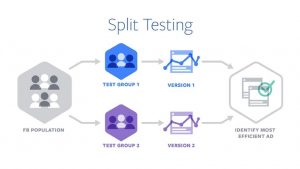To dominate in search engines, you need to make sure that your site or blog pages are running in tip-top shape. This can be done by observing the best SEO practices, whether it’s on-page or off-page. However, with the glut of information available, it’s hard to determine which ones are the right practices to observe for SEO.
For this reason, we are listing down eight easy-to-follow tips that you need to consider doing when writing and developing your content.
1. Write at least 2,000 words
More is more when it comes to content. According to a study conducted by serpIQ in 2012, the first 10 results from Google has an average of at least 2,000 words.
By beefing up your content with as many words as possible, you can increase your chances of getting ranked for your target keyword.
Keep in mind that you should not force your content to reach 2,000 words all the time. You wouldn’t want to overload your content with fluffy words just for the sake of reaching 2,000 words. The meat and bones of your content, which are the ideas and thoughts, are the most important aspect of your article. If your content is able to explain these in less than the number of words suggested by serpIQ, then this should do nonetheless.
2. Use heading tags
Presenting your content in an organized manner is what heading tags help you achieve. Instead of writing content as one whole chunk, you can divide different section in your content to make it easier for readers to read and understand your article. At the same time, search engines use header tags to determine the content’s relevancy to the keyword phrase it’s targeting for.
3. Optimize for a target keyword

Pretty much every successful SEO campaign is grounded in the correct and carefully chosen keyword phrase to optimize for. It all start with conducting a thorough keyword research using different tools to find the keyword phrase that best fits your content. By collecting around 5-10 keywords to build your site around , you can build laser-focused content based on the phrases you’ve researched.
4. Use images

I love pin + interest
Visual content has gained prominence over the years because it helps deliver information faster and more effectively, according to this post at Hubspot.
Use visual image editors like Canva, PicMonkey, and Visual.ly (for creating infogrpahics) so you can create customized images and photo that you can use on your site pages. Also, with the growing influence of Pinterest as a way to increase your ROI, among other social image sharing sites, you can “pin” your image to help your content get found much easier.
While the process undertaken in developing and promoting visual content is not for SEO purpose, it still has a indirect effect to your SEO performance. Since marketers believe that there is a relationship between high social shares and high search rankings (see graph above), visual content helps bridge the gap for you. By creating compelling images and infographics, you can get more people to share these to their followers, which could lead to an increase page ranking in search results.
Use grammar checking tools (or read post to find errors)
5. Ensure its uniqueness
Outsourcing content from third-party services is a great way to delegate content development to professionals. In fact, aside from the common job sites like Upwork and Elance, there are services to help you publish editorial content that relies on storytelling (Skyword, Contently), technical writing content (Webster Techwriters), and even academic content (most of which are compiled at Omnipapers).
While you can be confident that the content published by these services are top-notch, there’s nothing wrong if you run the content first using a plagiarism checker. Since search engines penalize sites or blog that publish spun content, making sure that it passes your choice of plagiarism checker will keep your site safe from any content penalties.
6. Boost your calls to action
Calls to action are ways that will help you meet your online goals thorugh your content. Whether it’s redirecting visitors to a specific page in your site, building an email list, growing your social media followers, or getting your readers to comment on yourpost, among others, create a compelling call to action will help expedite your process.
Using the best calls to action for each of your content pieces and improving them further to boost your conversion rate is something that you should strive for. Consider that your optimized page will receive lots of traffic because it will rank on search results for your target keyword, you need to convert visitors into your leads, customers, or part of your engaged community.
Are there other things that I forget to mention when optimizing for your content? Share them byu commenting below!
(210)









